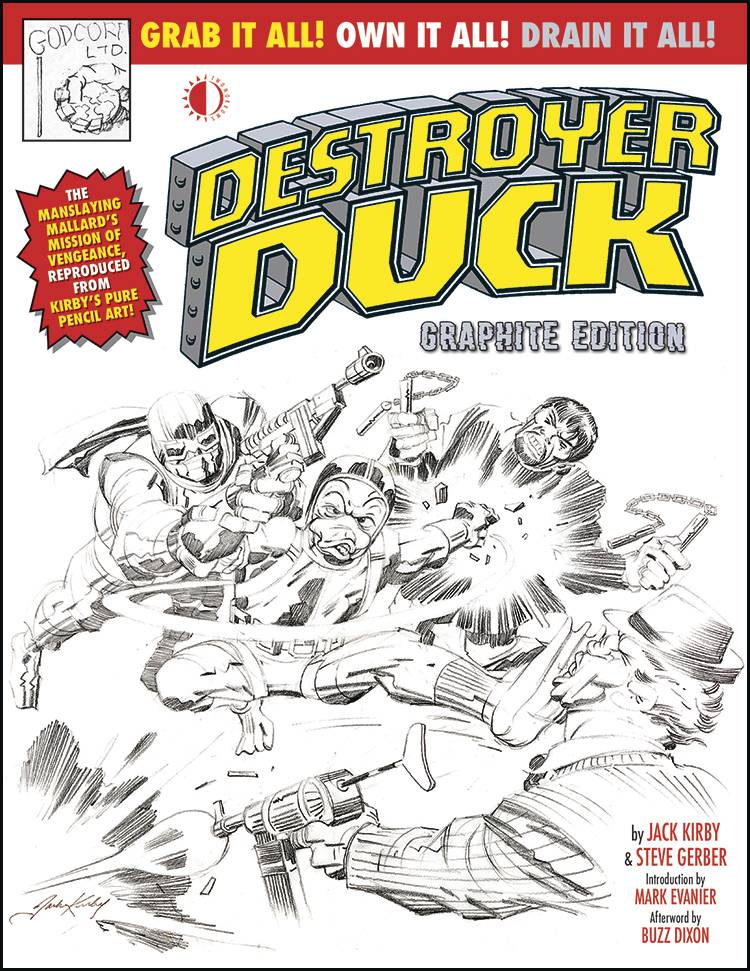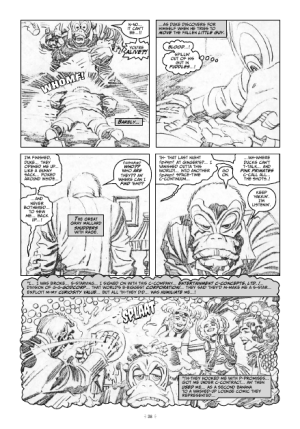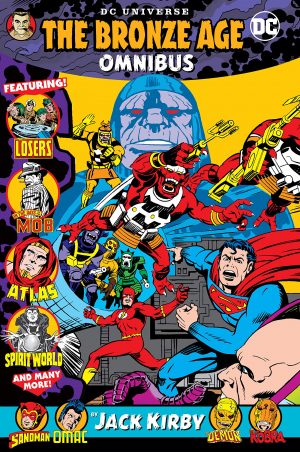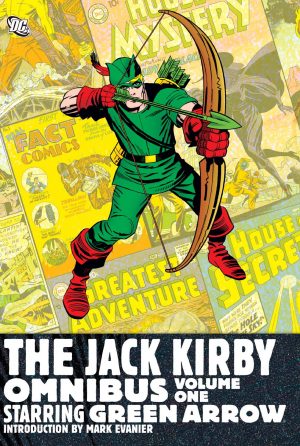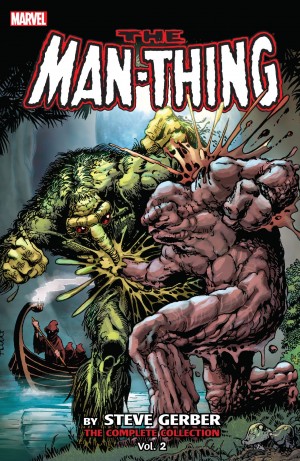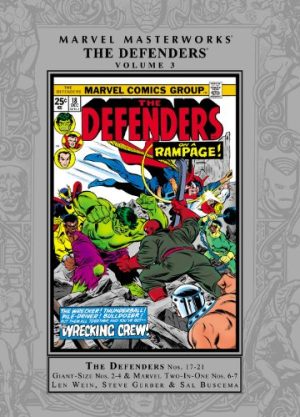Review by Frank Plowright
There’s a fair amount of background to Destroyer Duck, but Mark Evanier’s introduction covers that eloquently and comprehensively. What’s necessary to know in order to follow the comics is that in 1982 both Steve Gerber and Jack Kirby had legitimate grievances against Marvel, and the world of Destroyer Duck satirises the company, its staff at the time, and the way it conducted business.
A collection of the actual series as inked and coloured has never manifested, and it’s been so long since their publication it’s now unlikely, so this serves the dual purpose of repository as well as showcase for Jack Kirby’s original pencils.
Looking at that aspect first, when Kirby drew Destroyer Duck he was nearing the end of his career, and there’s no pretending this is his finest work. However, there are flashes of the artistic powerhouse he was. Most splash pages are powerful, and there’s a real spirit to the first issue where the design work around the all-consuming Godcorp and their technology shines through, and an opening bar sequence with drinking humanoid animals recollects Kamandi. The second issue also has several notable moments, but they become fewer and further apart after that. Seeing any Kirby pencil art is of course instructive, and Gerber’s typed scripts are provided to show how Kirby chose to interpret them.
Original art from Kirby’s final story isn’t available, so for the sake of completeness they’re presented as inked for publication by Alfredo Alcala. It’s a fundamentally incompatible mix of an arch-stylist with someone whose inclinations are toward classic linework techniques, and raises the value of seeing the pencilled pages without inks.
Considering the story separately, the first issue stands alone as a tidy piece of satire. Gerber’s feelings about his creation Howard the Duck and how the character was used are incorporated into a witty plot about corporate priorities satirically played out as superhero action. Surprisingly, the second issue is as good, with Evanier’s introduction explaining jokes such as the detached spine. Once that’s done, though, Gerber has little left to say but repetition. His letter to publisher Dean Mullaney when submitting the script for the fifth issue is reprinted, confiding his doubts about the viability. By then he’d settled his legal case with Marvel (details remain confidential) and it’s apparent the righteous anger that fuelled the first and second stories has dissipated, and the remainder has the occasional witty moment amid all too easy jabs at Strawberry Shortcake.
For all the qualms about the later stories, seeing any pencilled artwork by Kirby reproduced is an absolute treat, and to qualify, Kirby not at his peak still betters much of the superhero artwork being published in 1982 by Marvel and DC.
